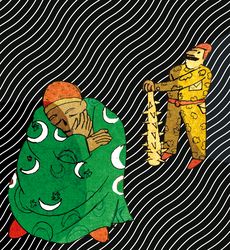Two deals between India and Pakistan have survived military’s wars, terrorists’ bombs and diplomats’ joint statements. One is about sharing the Indus waters; the other is about telling each other about their atomic assets.
First about the latter. General K. Sundarji’s brazen Brasstacks in the 1986-87 so scared the Pakistanis that many feared India might do an Osirak on their Kahuta. Osirak, if you have forgotten, was a plant where Saddam Hussein was suspected to be making bombs, and was bombed by Iran in 1980, and then by Israel in 1981. The two operations defined ‘surgical strike’ for all times to come, though Digvijaya Singh is yet to grasp its meaning.
Then Benazir Bhutto waved a white flag and an olive branch at Rajiv Gandhi. The two, both newly elected and innocent of the ways of the big bad Ronald Reagan-led world, agreed to tell each other about the places where their scientists were experimenting with uranium atoms.
Thus, the two countries began a practice of exchanging lists of their nuclear plants on every January 1, complete with their locations and even longitudinal coordinates. That might sound like an invitation to enemy bombers, but believe me, the deal has proved to be the best confidence-building measure ever thought of between the two sparring neighbours. It has survived a dozen bomb tests, nine Indian prime ministers, umpteen Pakistani generals and rulers including a dim-witted ex-batsman and a 10 per cent commission agent. Even today, when India is being led by Narendra Modi who has cut off all kebab diplomacy with Paksitan, the deal is working. Only a month ago, diplomats of both countries exchanged New Year greetings and the location maps of their countries’ nuclear facilities.
The other deal, an older one, is the Indus Water Treaty by which Jawaharlal Nehru and Ayub Khan agreed in 1960 on how to share the waters of the Indus. It is a simple treaty, and therein lies its charm and the secret of its endurance. The main river and its five branches, which gave Punjab its name, were classed into three western rivers and three eastern rivers. The treaty gave India control over all the eastern rivers—the Beas, the Ravi and the Sutlej—while Pakistan got the western rivers, the Indus, the Chenab and the Jhelum. All the same, the treaty allowed India to take a little water from the western rivers for wetting farms. India was also allowed to build dams upstream in the western rivers for generating power, as long as most of the water flowed into Pakistan.
But when India began building hydropower dams, Pakistan went wailing to the World Bank who had mediated the deal. The bank told them that power turbines don’t drink water, and all the water that’s Pakistan’s would reach them after turning India’s power turbines. Pakistan then raised a new fear—what if India suddenly opens the gates and flashfloods the whole of Punjab? The bank had nothing to say, since the deal had been made on the assumption that both countries would be ruled by sane men. So Pakistan asked for a neutral umpire and also for a court of arbitration. How can two courts look into the same matter at the same time; what if they give conflicting orders, asked India. Stick to the neutral expert, as provided for in the deal.
So far so good. But now, India has asked for renegotiating the whole treaty. Pray, why? Isn’t it like the winner in a lower court case filing an appeal? Or, Nehru going to the UN when he was winning the Kashmir war?
Let’s leave the treaty alone. It works well for us, as also for Pakistan if they are sensible.
prasannan@theweek.in


